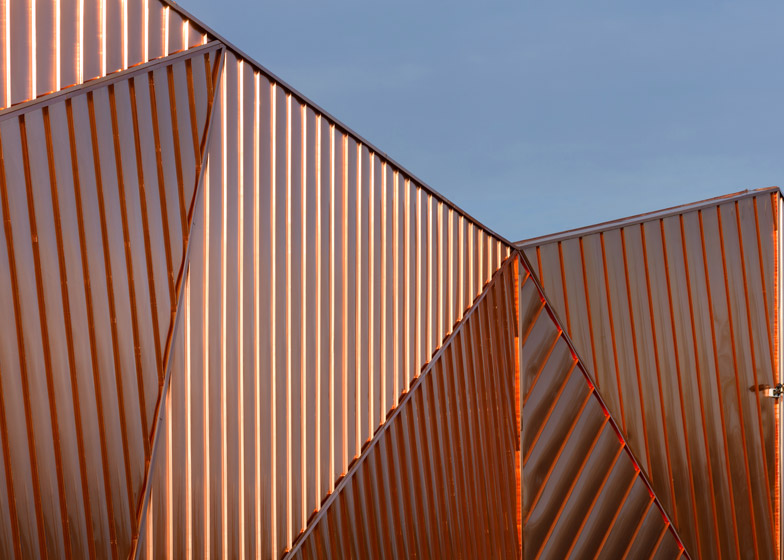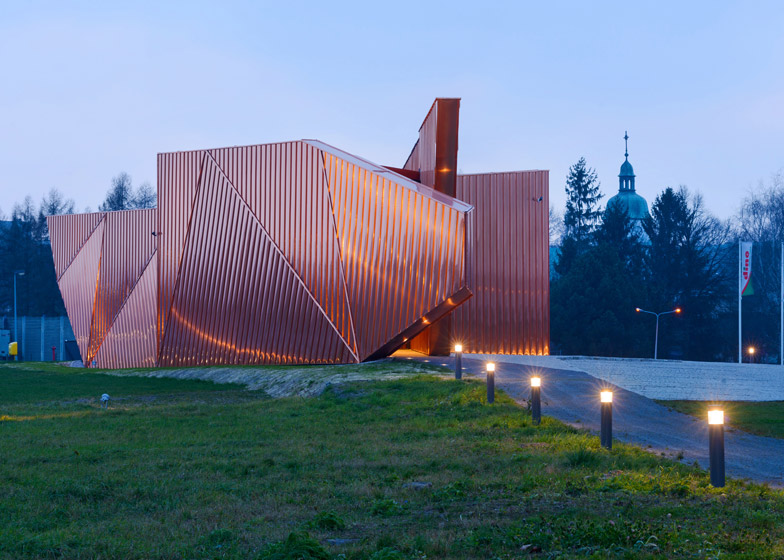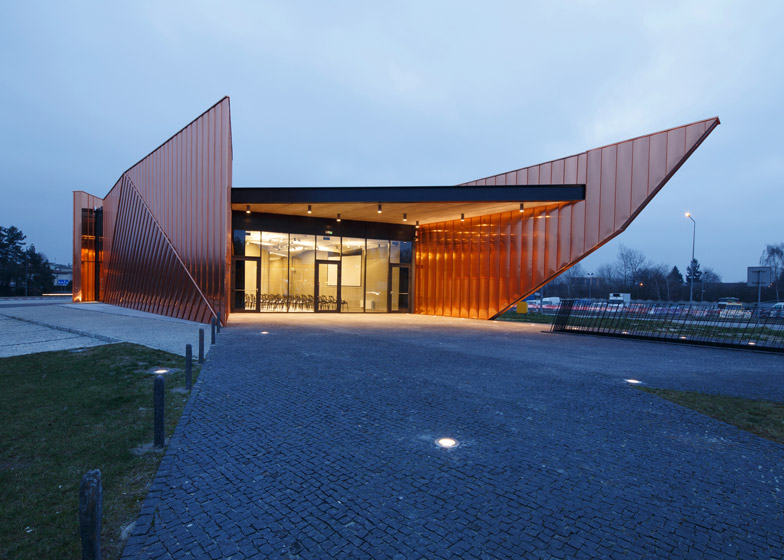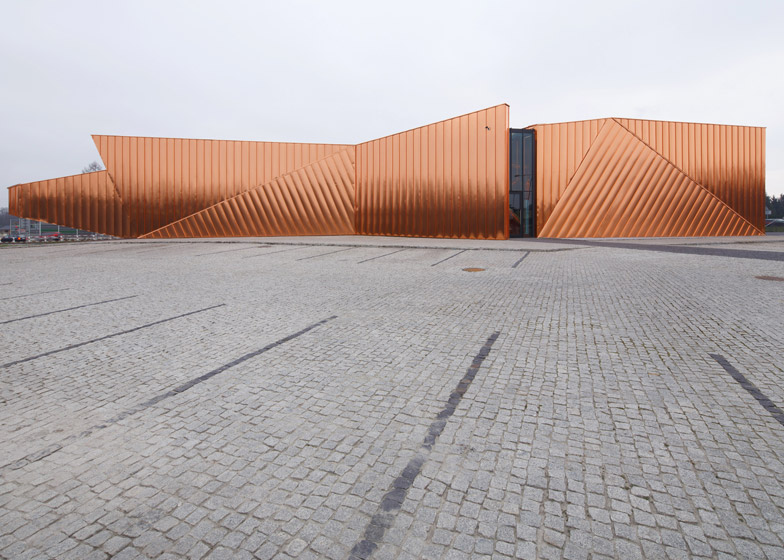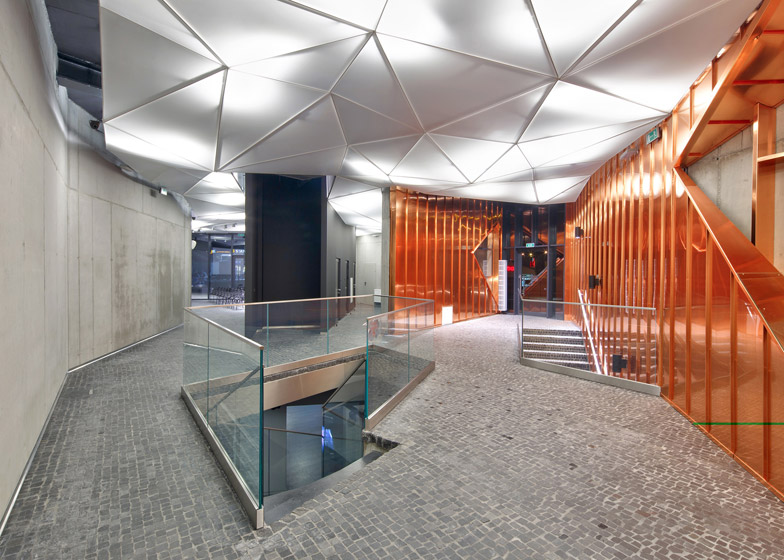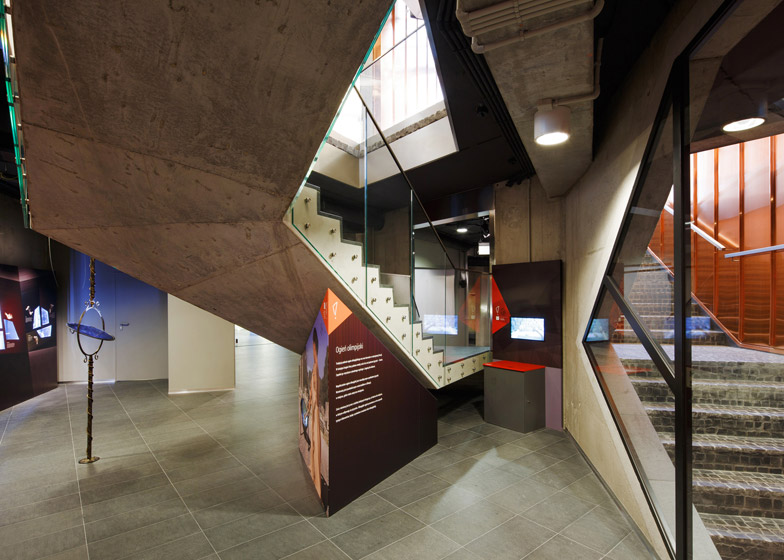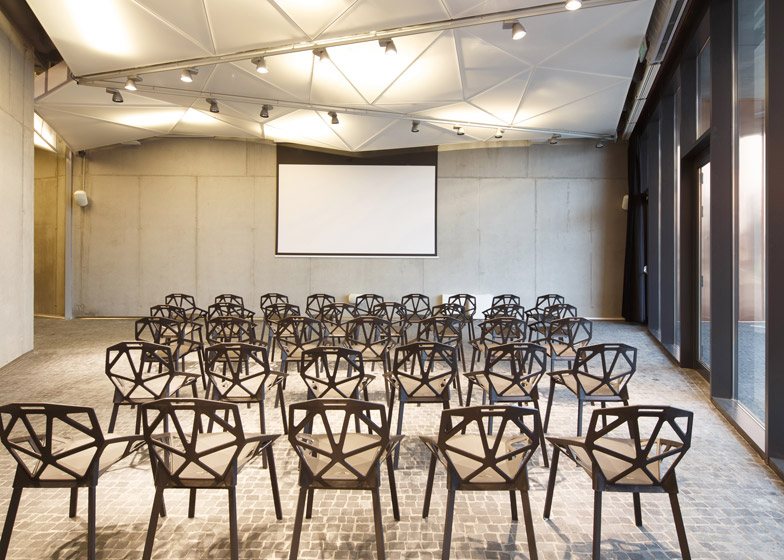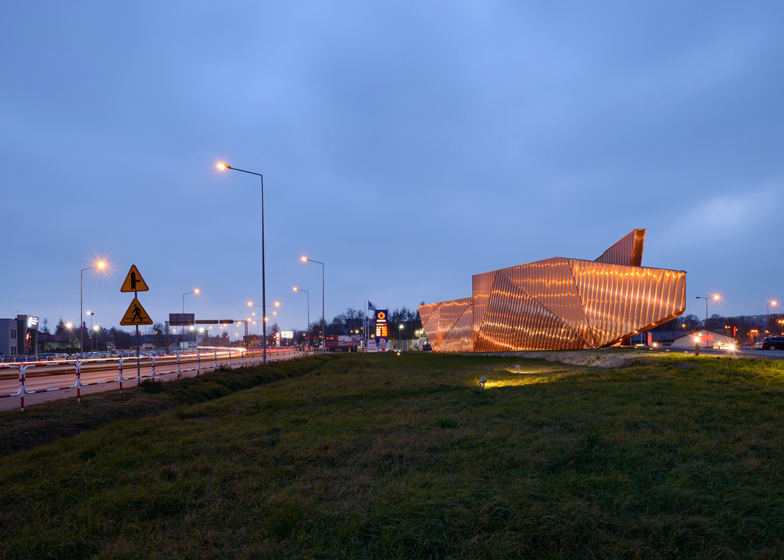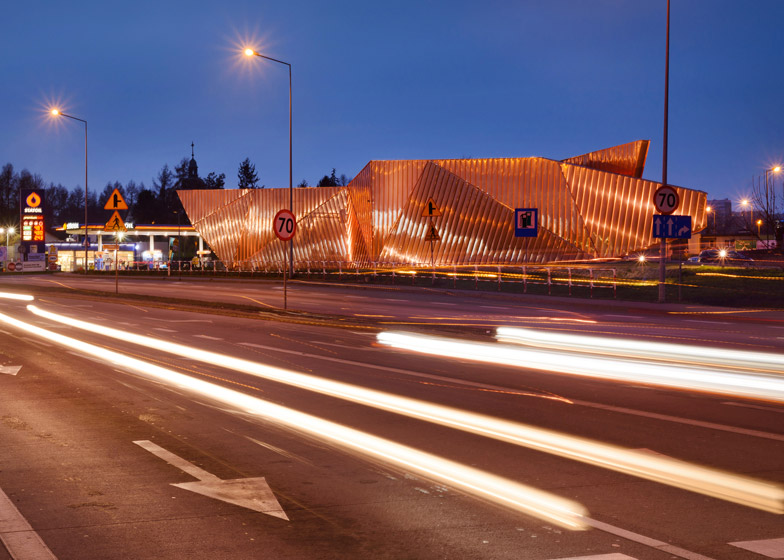Each facet that makes up the facade of this community building in Poland by OVO Grabczewscy Architekci is covered in a sheet of shiny ridged copper to create the impression of flames (+ slideshow).
Katowice-based studio OVO Grabczewscy Architekci designed the Museum of Fire after being asked to create a cultural pavilion for the city of Żory in southern Poland, near both the Czech and Slovakian borders.
It serves as a tourist information and community centre, but also hosts local history exhibitions.
When the medieval city was founded in the 12th century, a forest was razed to produce the open space. The name of the city is derived from the process used to create this earlier Slavic settlement called Zar – meaning fire, burnt or flames – which provided the basis for the design.
"It became obvious to us, that the building should look like a fire," said OVO Grabczewscy Architekci co-founders, Barbara and Oskar Grabczewski.
Shards of copper jut from the ground and crumple into a flame-like formation. Beneath this cladding is a shell of reinforced concrete.
Up-lights positioned around the perimeter of the building set the reflective facade ablaze at nighttime.
The irregular form of the building was dictated by the limitations of the site. It sits on an unusual plot, sandwiched between a petrol station and the main access road for the city, and contends with a number of pre-existing underground structures.
"The plot had a lot of disadvantages, especially a great number of underground infrastructure that left only very strange, irregular shaped piece of land to build on," explained the architects.
An irregular plan of two storeys accommodates these existing services, with the angular projecting volumes above ground representing the subterranean plan like the tip of an iceberg.
"The strange shape on the plot suddenly started to resemble dancing flames," said the architects.
Two angled metal fins project out from one side of the building to conceal the sliding glass doors of the main entrance. Two further entrances are set into crevices in the structure.
Inside, elements of both concrete and copper can be seen across the walls, while the ceiling complements the exterior form with a folded white surface veined like the underside of a leaf.
A lobby and information area are located across the ground floor, while an exhibition hall and support spaces are submerged below the ground.
A room located off the main reception area can be used as a gathering spot for screenings and talks. The black latticework of the chairs chosen for the space reference the folded ceiling.
Glazed stairwells lead down from a cobbled walkway connecting the lobby and theatre to the exhibition hall. This space was only decided upon by the client during the excavation process for the building.
The floors are paved with small pieces of black stone throughout, which continue onto the plaza that surrounds the building.
The landscaping around the museum creates separation from the main road that runs across the front of the site.
"The building and the landscape work together to create a symbiosis of space consisting of museum itself, pedestrian paths running through the pavilion and green walkways," said the architects.
The architects plan to develop this patch of land into an outdoor exhibition space, named Garden of Fire. They envision that it will be used to host the city's Festival of Fire, a procession that takes place each summer to commemorate the great fire that destroyed much of the city in 1702.
Photography is by Tomasz Zakrzewski / archifolio.
Project credits:
Architects: OVO Grabczewscy Architekci Katowice (Barbara Grabczewska, Oskar Grabczewski)
Project team: Beata Kosok, Marta Musiał, Agnieszka Krzysztonek, Martyna Wojtuszek
Main contractor : Voyage Sp. z o.o., Żory
Copper facade: Grande Polska Sp. z o.o.
Lightning: ES – System Polska Sp. z o.o.




